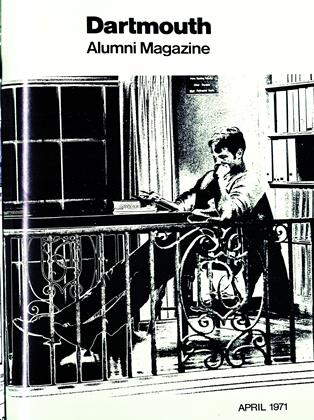By CharlesT. Wood (Associate Professor of History).New York: Universe Books, 1970. 176 pp.plus 48 of illustrations. $10.
Professor Charles T. Wood, in his new book The Age of Chivalry, helps us to understand and to feel what it was like to be alive in northern Europe (mainly France) between 1000 and 1450. In describing and analyzing the thoughts and behavior of men living at this time, he maintains a fine balance between presenting the vivid details and telling anecdotes which bring history to life and keeping these particulars firmly in perspective against the general trends (economic, political, social) that influenced men's lives. Too much emphasis on details and anecdotes would have made his account aimless; too much on general trends would have made it bloodless. The balance he achieves with economy and clarity.
Professor Wood analyzes European culture at 1000 A.D. into three mutually antagonistic inherited traditions: the Roman, stressing rational abstractions of law and justice; the Christian, emphasizing faith over reason and the life after death over this one; and the Germanic, stressing personal assertion of power in the leader and personal loyalty to him in his followers. He describes the wretched condition of this fragmented, chaotic society: a starving peasantry, a truculent aristocracy, and a Church whose hold over the people amounted to little more than their superstitious trust in the efficacy of ritual and sacraments to save their souls. He then shows how, with certain crucial technological advances like the invention of the horse collar and the iron plowshare with moldboard, these conflicting elements were, during the next three centuries, harmonized and blended into a coherent civilization.
As Professor Wood presents this develop, ment, he concentrates on examining how men viewed the world and why they acted as they did. Thus, in his account, he presents some of the more bizarre incidents in medieval history. In the posthumous trial of Pope Formosus in 896, the Pope's corpse was exhumed by a rival faction, arrayed in full regalia, found guilty of immorality and heresy, maimed, dragged naked through the streets, and cast into the Tiber. In contrast we have the chivalric idealism of a French king, lohn the Good, who, unable to meet the huge ransom payments he had promised to the English when they released him from captivity in 1360, voluntarily returned to captivity rather than break his word as a gentleman. These paradoxes are made comprehensible, perhaps even natural and inevitable.
Professor Dickerson, who teaches English atthe University of Vermont, has accompaniedChaucer's pilgrims to Canterbury and exploredmedieval Europe.
 View Full Issue
View Full Issue
More From This Issue
A. INSKIP DICKERSON JR. '56
Books
-
 Books
BooksFACULTY PUBLICATIONS
March 1942 -
 Books
BooksBriefly Noted
DECEMBER 1966 -
 Books
BooksMan and his Fellows: Lectures on the Henry LaBarre Jayne Foundation, Academy of Music, Philadelphia, 1925
May, 1926 By C. D. Adams -
 Books
BooksGENERAL EDUCATION IN THE PROGRESSIVE COLLEGE,
November 1943 By Irving E. Bender. -
 Books
BooksNEW ENGLAND SONNETS, ONE HUNDRED SONNETS SELECTED AND REVISED BY THE AUTHOR WITH A FOREWORD BY OGDEN NASH.
APRIL 1967 By JOHN HURD '21 -
 Books
BooksNEUROLOGY AND PSYCHIATRY FOR GENERAL PRACTICE
May 1951 By NIELS L. ANTHONISEN, M. D.







